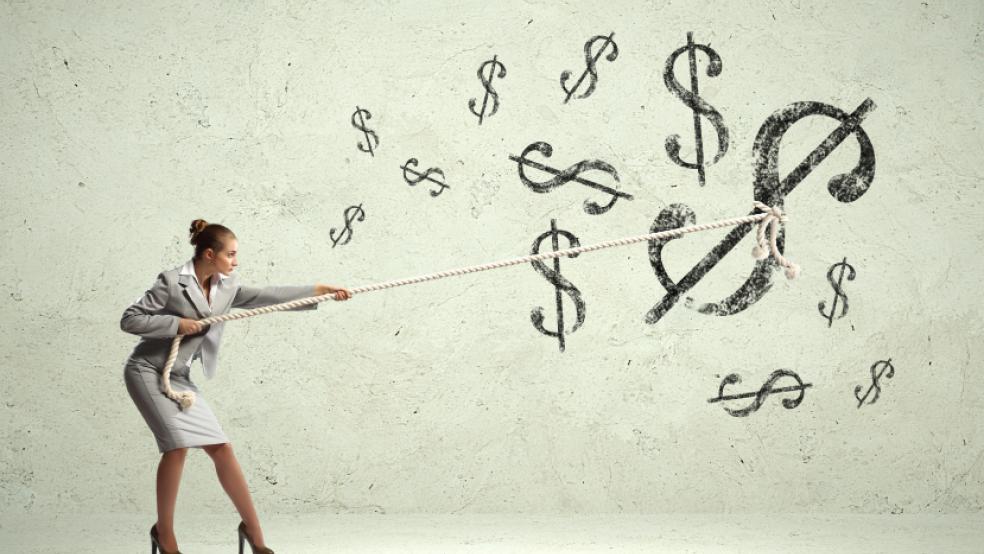Working for yourself comes with lots of perks: setting your own hours, your own dress code and your own workload. That’s probably part of the reason nearly a quarter of workers freelance, either full- or part-time. They make good money, too. Almost half earn six figures.
The downside is making up for all the benefits that employers typically provide. That means figuring out health care coverage (which at least is now easier — if not cheaper — than it was before Obamacare) and setting up retirement accounts.
“When you have a workplace 401(k), a lot of the heavy lifting for retirement planning is already done for you,” says Christine Benz, director of personal finance at Morningstar. “That makes it easier to overcome some of the barriers around getting started with retirement planning.”
Related: 13 Tax Tips for Self-Employed Workers in 2016
That’s not the case for self-employed workers. More than three out of 10 freelancers said they were anxious about saving money for retirement, and more than half reported being behind, according to a November study by TD Ameritrade. By contrast, Americans with access to a workplace retirement plan were more than twice as likely to be very confident about having enough money to retire, according to a separate study by the Employee Benefit Research Institute.
The good news is that saving for retirement is not impossible when you’re working on your own, though it may require more effort. Here’s what you need to know:
You’ll need to put away even more. Financial advisers recommend that savers stash away at least 15 percent of their income for retirement, including their own money as well as any employer match. Freelancers have to sock away even more income to make up for not getting an employer match. That’s on top of building an emergency fund with at least six months’ worth of expenses that can help weather a dry spell.
It’s important for freelancers to factor the cost of those savings into their business budget, says Randi Merel, a financial advisor for Merrill Lynch. “You have to make sure that you’re earning enough money to cover your benefits,” she says.
Related: This Is Why Freelancing Is the Hot Work Trend
You’ve got several options. There are several ways freelancers can save money for retirement. Here are three to consider:
1) A traditional or Roth IRA: If you already have one of these accounts and aren’t making a ton of money, you can just continue putting aside retirement income there. With a traditional IRA, any withdrawals will be taxed, but you can deduct your contributions.
With a Roth (you’re eligible if your income is less than $120,000), you pay taxes now on your contributions, but the money grows tax-free. You also can make tax-free withdrawals on the principal, so it can double as an emergency fund for new freelancers, although you’ll want to keep the investments fairly conservative. “Then when you start taking on more projects and making more money, you can have a dedicated retirement fund,” says Randall Greene, CEO of Greene Financial Management in Altadena, Calif.
Annual contribution limits for both accounts are $5,500 for younger savers and $6,500 for those over 65.
2) SEP IRA: The most common plan for freelancers and sole proprietors, SEP IRAs allow contributions up to about 20 percent of your compensation, or $53,000, that grow tax-free. There’s a complex formula to determine your contribution based on your compensation as a self-employed person. Use this calculator to find the exact amount.
Related: Here’s Who Is Winning in the Gig Economy
A nice benefit of SEP IRAs is that the deadline for contributions is either Tax Day or when you file your taxes. So, you could put away just 5 percent of your income all year, but decide in February to put another 20 percent in because you find that you have the extra income. That can help you make up for any leaner years when you couldn’t contribute as much. (The same benefit applies to IRAs and Roths, but at much lower limits.)
You can set up a SEP IRA with almost any bank or brokerage, and fees tend to be minimal. “It’s a very cost-effective option,” says Douglas Boneparth, a financial advisor and partner with Longwave Financial.
3) Solo 401(k): Also known as an individual 401(k), these accounts let you put away $18,000 as an employee. Additionally you can contribute about 20 percent of your compensation (again, use the above calculator to determine the exact amount) or $53,000, whichever is less, as your own boss. Those over age 50 can put in an extra $6,000, and spouses who work together can both put in $53,000.
A Solo 401(k) may cost more to set up and require additional paperwork at tax time, but its assets are protected from creditors under the Employee Retirement Income Security Act. Contributions must be made before the end of the calendar year.
Many Solo 401(k)s also offer the option to borrow against your retirement savings, although experts say that doing so is rarely the best financial move.
Skip automation. Most retirement accounts offer an auto-fund option allowing you to set aside a predetermined amount of money each month. That can be more difficult for freelancers, since your income fluctuates. Instead, consider making contributions a few times a year, recommends Gage DeYoung, a certified financial planner and founder of Prudent Wealthcare in Aurora, Colorado. “Plan on doing it at the same time that you pay your estimated quarterly taxes,” he says.
Plan to work longer. Since freelancers control their schedules and how much work they take on, they’re ideally situated to ease into retirement. If you plan to continue working (even if you’ve scaled back) to delay drawing down your retirement funds, then you can retire more securely on a relatively smaller nest egg.





